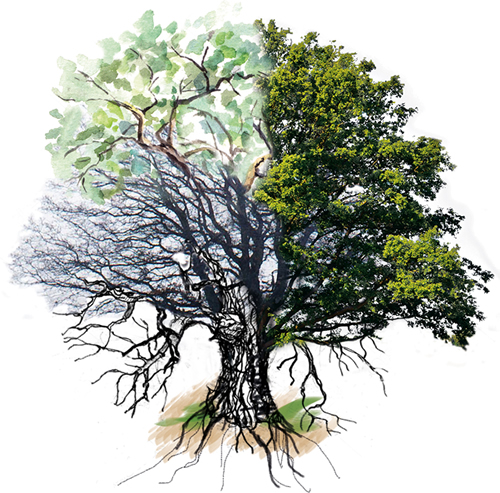Courses in spirituality and art
Over the years I have developed and lead many courses on the meaning of life, spirituality and art. Here is a list of what I have to offer. These courses stand out becasue you are invited to be actively involved. The course leader will set out the framwork but each member of the group brings her or his own input. The aim is to discover your personal sources of spirituality and to get a different outlook on yourself, life and creativity. For this you are in dialogue with group members, artists and writers.
Meeting Eye to Eye: Looking Inside - Artists' Self-Portraits
Immediate, vivid, intimate, authentic: self-portraits. The artist does not only presents a vision about him or her self but also testifies to the field of force in which s/he lives. Autobiographical, caricatural, critical or full of fantasy; the self-portrait presents us with a mirror. Is the artist only portraying or evaluating his or her self? In which social and artistic context is s/he imbedded? With which questions does the self-portrait confront us, the spectator, with? We engage ourselves with the self-portraits of some famous painters of the human face: Rembrandt, Egon Schiele, Lucian Freud, Marlene Dumas and others.
The Mysticism of Rothko's Abstract Art
The colourful and larger than life scale of Mark Rothko's paintings evoke a world of existential experiences: fear, tragic, euphoria and ecstasy. Rothko seeks a depth in his art, something permanent, unchangeable and the same for everyone. His art comforts en astonishes until this day. The German medieval mystic Meister Eckhart speaks about the essence of the soul, which is divine in itself. Until this day the texts of Meister Eckhart are an inspiration to many. How do the visual language of Rothko and the words of Eckhart influence each other? And what does it open up in us, the looker and listener?
In the Silence of the Light: Meditation and Contemplation in Visual Art and Music
Intense, breathtaking, ominous or alienating. Silence has got many different modes. But how does silence look like in art? Where can we find it? We can see it in the faces of people and in the luminosity of landscapes. Also, where can we hear silence in music? In this course we will look for silence in art, listen to silence in music and be confronted with its force. We will get into a dialogue with the great artists of silence and light: Mark Rothko and Gerhard Richter. We look at the expressions of silence on the portraits that Marlene Dumas and Käthe Kollwitz have created. We will put our ears to the music of Philip Glass, Michael Nyman and John Cage. All these artists honour, catch and dislocate our perspectives by purposely use silence and light in their work.
Thomas Merton on Christian Spirituality, Zen Buddhism, Contemplative life and Art
Thomas Merton (1915-1968) was an important Catholic theologian, poet, autor of many many books and articles and social activist. He was a Trappist monk in the United States. As advocate of the interreligious dialogue he develope close relationships with prominent leaders of other religions, amongst which the Dalai Lama, Abraham J. Heschel and D.T. Suzuki. Merton probably is one of the most influential 20th-Century spiritual writers. He has left us his many diaries, hundreds of letters and theological and spiritual books. Furthermore, and less know he had a gift to write poetry and to make art. In this course, we go on a journey with Merton, his own life, following his spiritual and artistic transformation. To use some keywords from his legacy: solitude, contemplation, creativity, nonviolence, love, dialogue, humility and writing.
Etty Hillesum on Spirituality and Writing
Etty Hillesum was a young secular Jewish woman when WW II shook up her life. In her autobiography, we intimately witness a very transforming journey in life. Etty writes about her life as a young woman looking for love, being inspired by the great writers and thinkers of that era, and trying to find her own voice as a writer. It's not far from being honest stating she comes across as a passionate woman with a well-developed ego. At the end of her life, she is killed in Auschwitz, and she has been transformed into a mature woman who takes the suffering of her people, the cross, on her shoulders. She forgets her self and lets God and compassion in. Her journals are a one of a kind mirror on the atrocities of the Shoah and the inner resilience of an artist. Etty Hillesum teaches us what it means to bow and go with your vocation.
Images of the Divine in Contemporary Art
In art, people have always expressed their religious experiences and their images of God or the divine. These images and experiences can also be found in contemporary art. Most of the time they are less explicit and unambiguous than we know from traditional religious art. That is why it takes more time and effort to get in touch with their meaning. In this course we will look at several different ways of visualizing God or the divine and compare them to our own images. We will try and open up different perspectives by working with visual art, film, literature and poetry. We will engage ourselves with the art works and let them convey their meaning and richness to us in a dialogical and contemplative way.


